Art
ReActor—a house that spins and tilts
Located in upstate New York at the OMI International Arts Center’s Architecture Field. It can rotate 360 degrees, blown by the wind, but also tilts up and down based on the movement of its inhabitants. From the YouTube description:The question I can't find answered is if they put any plumbing inside of it, and if so, how.
More info: AlexSchweder.com
Posted By: Alex - Fri Oct 26, 2018 -
Comments (9)
Category: Architecture, Art
The Marionettes of Donald Cordry
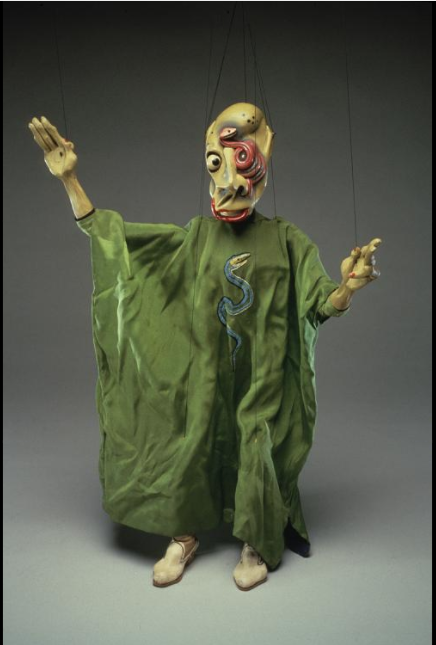
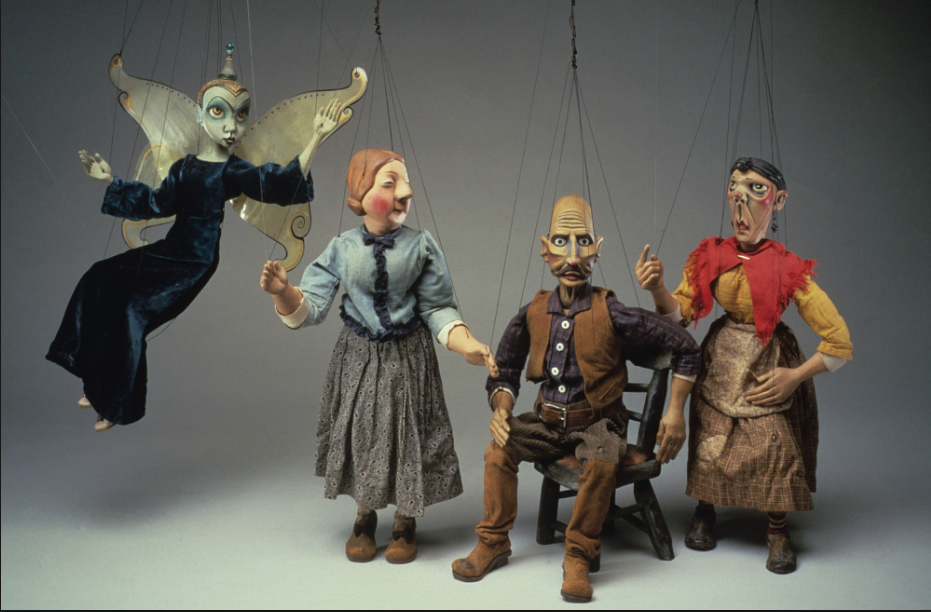
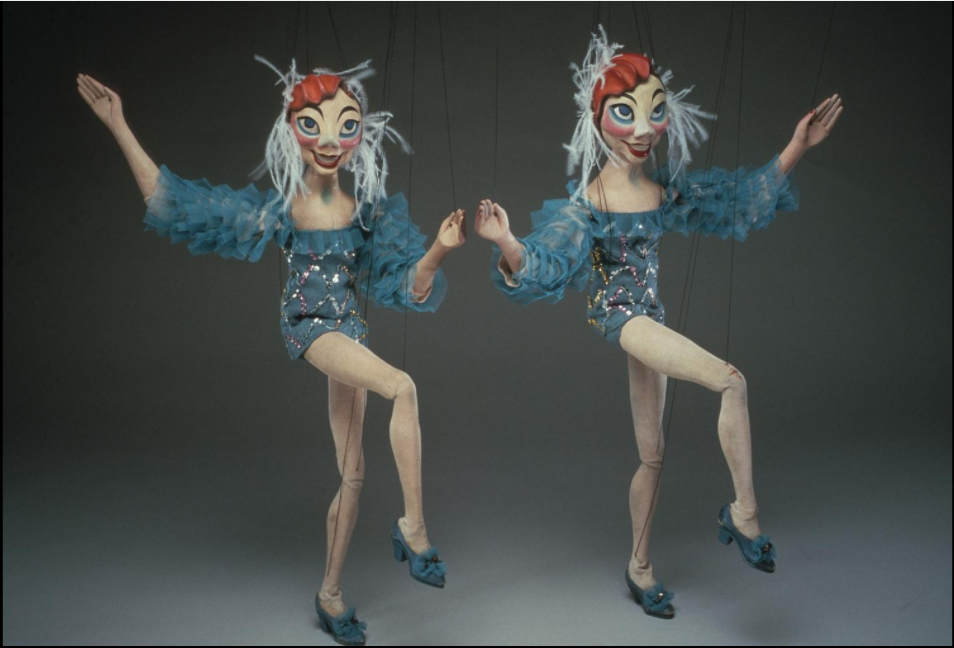
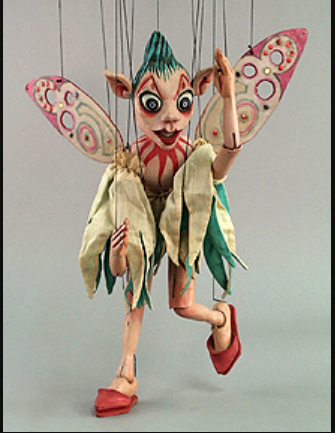
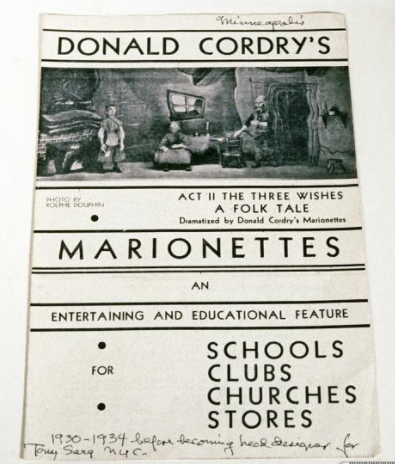
The green fairy is one of four marionettes used by Donald Cordry in his production of "The Three Wishes" that played in Minneapolis between 1930-1934. "The Three Wishes" was first written as a play for puppets by German writer Fronz von Pocci around 1900 and continues to be a popular play performed in many versions. Hand carved from wood, the fairy has an ethereal green painted face with joined eyebrows, black lips, large eyes with some hint of Asiatic features. She wears a clear blue glass pagoda head ornament in her golden hair , and she is wearing a long blue-green velvet dress, with beige tights,and rhinestone shoes with leather heels. Her wings are made of plastic. These charming carved and painted marionettes are great examples of Cordry's decorative sense of design and craftsmanship. The angel is operated with an airplane holder and eight strings.
The Three Wishes was first written as a play for puppets by German writer Fronz von Pocci around 1900. Donald Cordry (1907-1978) was a well known and highly respected American artist, craftsmen and puppeteer of the 1920s and 30s. He was gifted with a great decorative sense and his craftsmanship was extraordinary. Born in Minnesota, Cordry attended the Minneapolis School of Art from 1924-1929 and after graduation he went to work for the Board of Education. While his main job was to lecture and teach classes, Cordry took used the opportunity to create and perform his own marionette show with both hand puppets and marionettes. From late 1930 to early 1931 Cordry joined the Rufus Rose Company, owned by Rupert and Margo Rose that played the school and college circuit on the East coast. In the summer of 1931 he traveled to Mexico where he developed a life long interest and dedication to the arts and landscape of Mexico. An avid collector of ethnographic material for over 40 years, Cordry amassed a large collection of indigenous Mexican arts and crafts which he meticulously documented and researched. His passion also included Native American cultures, and in the mid 1930s he worked at the Heye Museum of Indian Art in New York City where he cataloged and researched objects for the museum. (The Smithsonian's National Museum of Natural History owns a large collection of Mexican masks donated by the Cordry family in the early 1980s.) After returning to Minneapolis in late 1931, Cordry started creating his own puppets. He formed his own company and performed shows until 1934.
The Dolly Sisters and the Three Wishes were popular with young and old audiences alike. In June of 1934, Cordry moved to New York and worked with Tony Sarg, a well known and established puppeteer in his own right, and taught classes at Sarg's Summer School. Cordry made a number of puppets for Sarg and toured with his company from 1934-1936. By 1937 poor health forced him to give up puppetry and he moved to Mexico. He did however, continue his field research on indigenous peoples and later on published two books - Mexican Indian Costumes (1968) and Mexican Masks (c1980). "The Three WIshes" was Cordry's final production before he moved to Mexico with his wife. The puppets and sets from this production were shipped in crates to Mexico and remained there almost fifty years. In 1982, his widow Dorothy Mann Cordry donated this collections to the Smithsonian which included not only the marionettes, but props made to scale and a fully operational puppet stage.
Posted By: Paul - Mon Oct 15, 2018 -
Comments (5)
Category: Art, Design and Designers, Puppets and Automatons, 1930s
Artwork Khrushchev Probably Would Not Have Liked 16
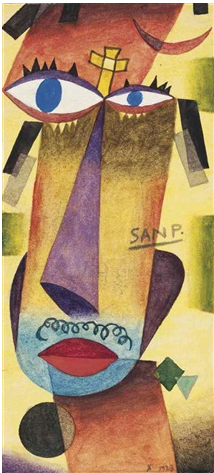
Xul Solar, "San P," 1923
I think we should just nominate Xul Solar as someone whose entire output would have displeased our Soviet realist.
More images here.
Posted By: Paul - Tue Oct 09, 2018 -
Comments (3)
Category: Art, Avant Garde, 1920s, Russia
Follow a stranger
Apparently there's a long history of artists surreptitiously following strangers around in cities, just to see what happens. It's called the Art of Following. More details from Debbie Kent in the Guardian:My assignment from Tomić is, of course, not intended to upset anyone. Rather, what I’m doing is a one-off exercise, and, as artist and writer Phil Smith puts it, is handing over control of exploring the city to someone else, chosen at random.
Smith regularly gives this task to students of theatre and performance at the University of Plymouth, seeing it as a valuable exercise. “The idea is that you’re exploring the space but someone else dictates it to you – it neutralises your will,” he says. “The intention – or hope – is that the followed person will lead you into places you haven’t been before.”
I don't see anything that could possibly go wrong with following a complete stranger around.
Posted By: Alex - Fri Sep 28, 2018 -
Comments (1)
Category: Art, Really Bad Ideas
Scherenschinitte
I actually kinda like listening to the German I can't understand. Allows me to focus on the art and imagine how it's done.Here's the Wikipedia page, which tells hardly anything more.
Here's the full version of that animated feature seen briefly above.
The artist's Wikipedia entry.
Posted By: Paul - Sun Sep 23, 2018 -
Comments (0)
Category: Art, Stop-motion Animation
Macaroni woman of the year
Since I posted a few days ago about eggplants that looked like Richard Nixon, I thought it only fitting to also note that his wife, Patricia, had her own food thing going on. In 1970, she was named Macaroni Woman of the Year by the National Macaroni Institute. She also had her portrait painted out of macaroni by the artist Don Wheeler.
Redlands Daily Facts - Oct 1, 1970

Wilkes Barre Times Leader - Apr 14, 1971
Posted By: Alex - Sat Sep 01, 2018 -
Comments (4)
Category: Art, Awards, Prizes, Competitions and Contests, Food, Politics
Artwork Khrushchev Probably Would Not Have Liked 15
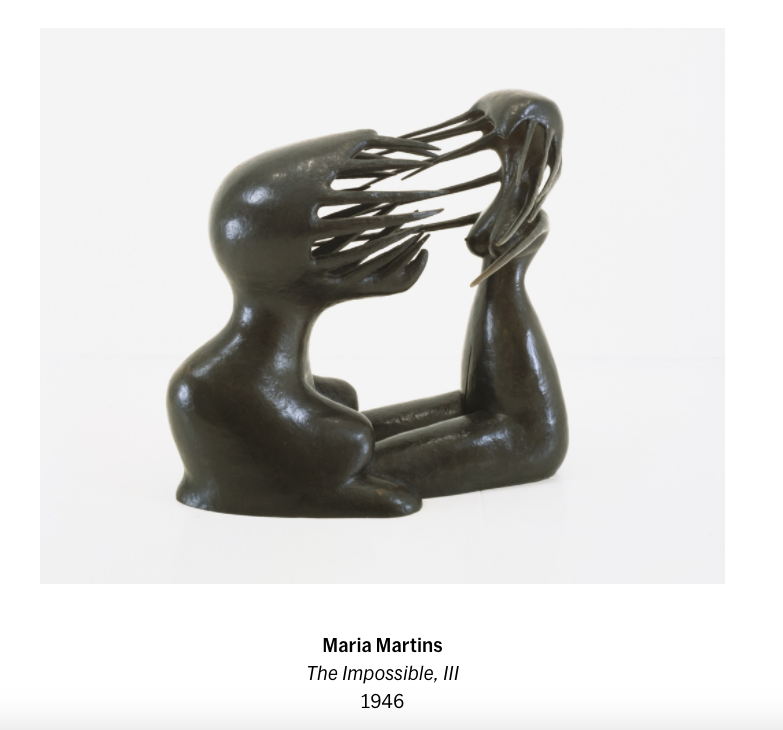
Posted By: Paul - Fri Aug 17, 2018 -
Comments (6)
Category: Art, Avant Garde, 1940s, Russia
Eye worm art
Artist Ben Taylor drew a painting that featured “psychedelic colors and wormlike patterns inside a perfectly round circle.” Only later did he realize that he had parasitic worms in his eye, and he thinks they might have subconsciously inspired him. From The Durango Herald:He later adapted his painting to make it more obviously an eye infected by parasitic worms, and as a result it’s been chosen as the cover art for this month’s issue of Emerging Infectious Diseases.

Posted By: Alex - Mon Aug 13, 2018 -
Comments (2)
Category: Art, Health, Disease, Eyes and Vision
Eisenhower on Modern Art
Apparently, Nikita K. wasn't the only critic of modern art outraged by the 1959 exhibition, as you can see from the article below. Eisenhower and Harry Truman weighed in at times.But Eisenhower, like George W. Bush today, also painted as well, presumably showing us what he regarded as good art.
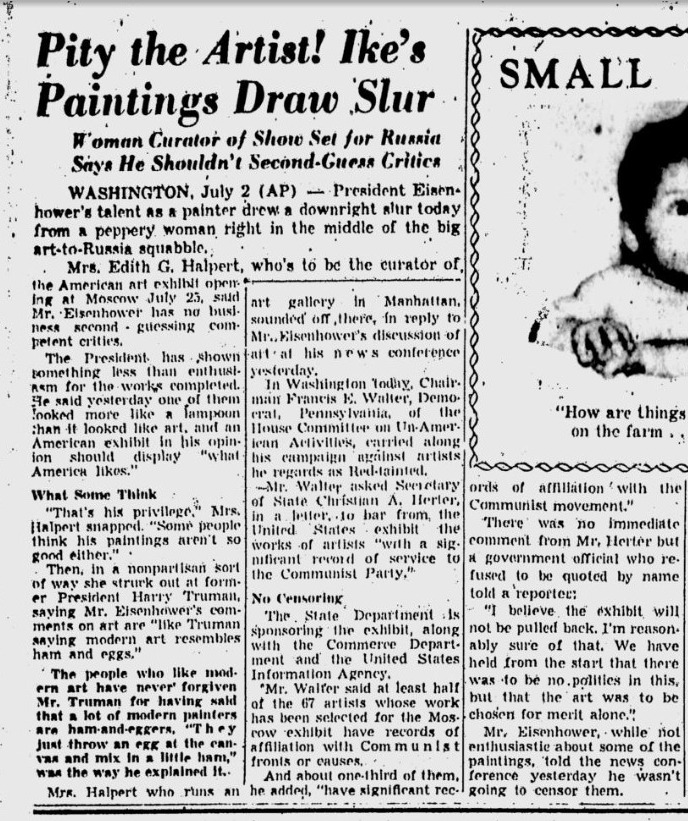

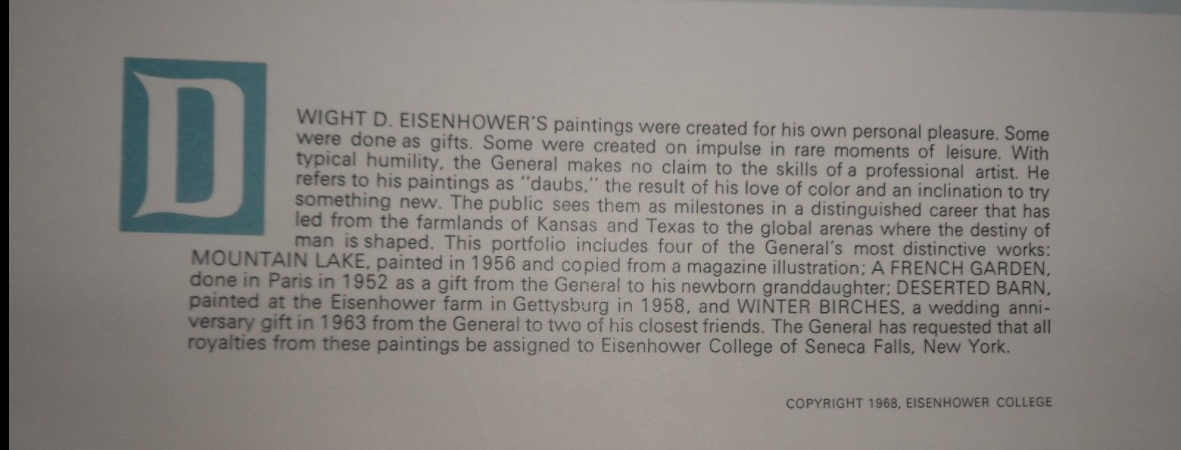
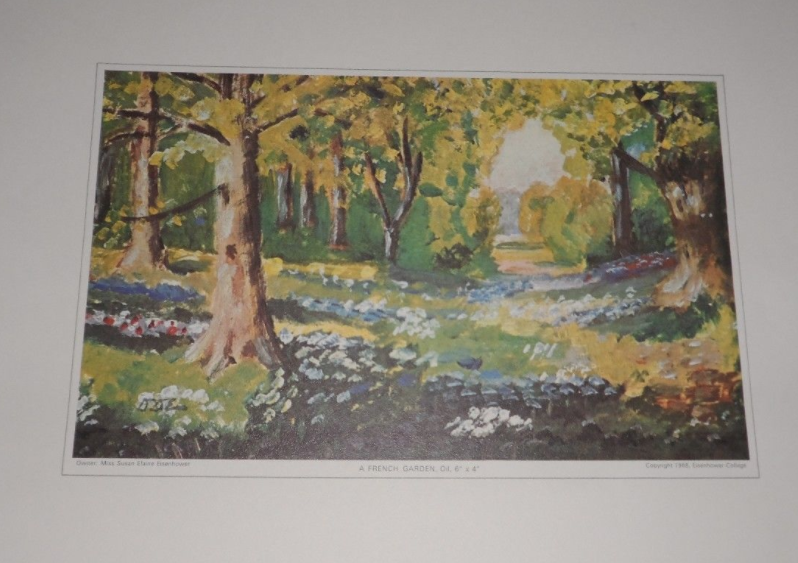
Posted By: Paul - Sun Aug 12, 2018 -
Comments (1)
Category: Art, Government, 1950s, Russia
Charlotte Moorman, the Topless Cellist
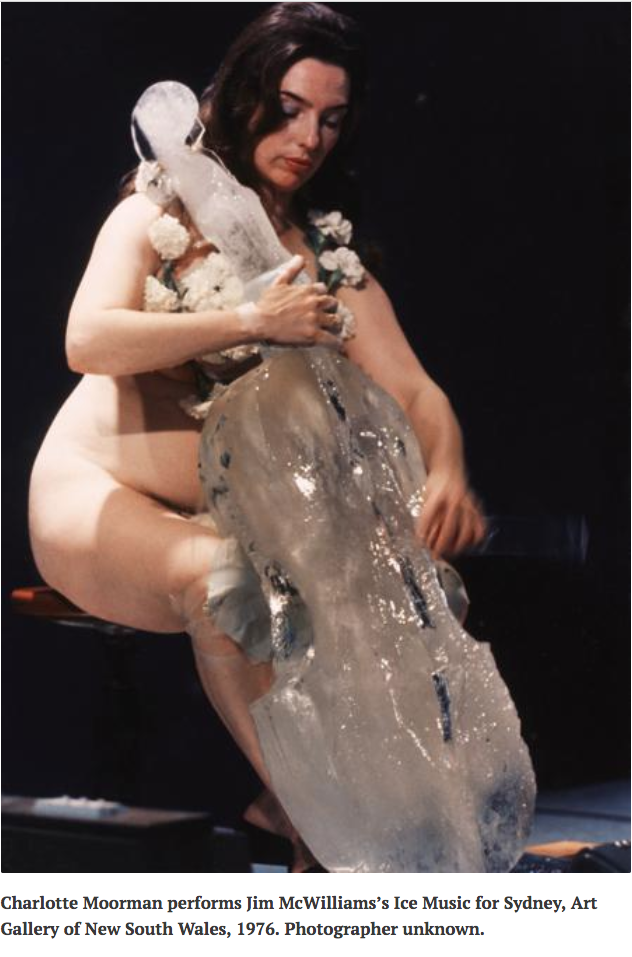
A great essay here, with many pix and videos.
Her Wikipedia page.
Posted By: Paul - Mon Aug 06, 2018 -
Comments (4)
Category: Art, Avant Garde, Misbehavior, Rebellion, Acting-out and General Naughtiness, Music, 1960s, 1970s

| Who We Are |
|---|
| Alex Boese Alex is the creator and curator of the Museum of Hoaxes. He's also the author of various weird, non-fiction, science-themed books such as Elephants on Acid and Psychedelic Apes. Paul Di Filippo Paul has been paid to put weird ideas into fictional form for over thirty years, in his career as a noted science fiction writer. He has recently begun blogging on many curious topics with three fellow writers at The Inferior 4+1. Contact Us |




